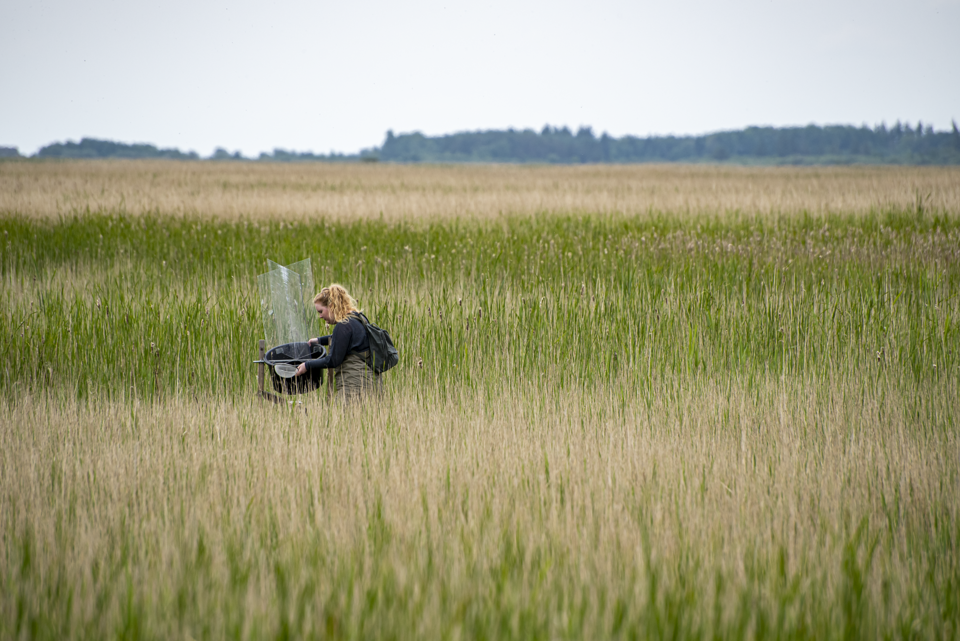The AAU research group mainly focused on the eastern part of Vejlerne, which consists mainly of brackish lakes from dyked-in tidal meadows. This area also contains Scandinavia’s largest forest of reeds and provides a crucial resting place for migratory birds. Dan Bruhn explains:
“Our aim was to provide the owners, the Aage V. Jensen Foundation, with knowledge they can use in their future management of the area in order to facilitate the highest possible degree of biodiversity. We collaborated with Aarhus University on studying different sections of the area, and here in Aalborg, our PhD student Line Holm Andersen studied the quality of botanical and insect life on the tidal meadows and in the forest of reeds. Our aim was to determine how different initiatives impact the biodiversity, for instance reed harvest or new dams.”
The researchers aimed to provide an objective overview of the current state of biodiversity as well as a number of tools that the foundation can use to impact the future biodiversity in the area. The research team looked at a wide range of aspects of the biodiversity, from mammals, fish and birds across invertebrates and to botany and plant ecology. The team also included researchers within environmental science in order to analyze the ecosystem in the area for water depths, erosions and plantation.
“In projects such as this, we as researchers provide the Foundation with an overview of causes and effects, so to speak, and then it is up to them to decide which tools they want to use. We cannot make recommendations as to what would be the best course of action, only provide them with the knowledge they need to make their decisions,” Dan Bruhn explains.
Comprehensive mapping of plants and insects
Line Holm Andersen had the support of a number of student groups who helped map out the plants and insects in different sections of the nature reserve. Their work consisted of collecting and counting samples of plants and invertebrates and comparing the occurrence of different species in different comparable areas.
“One area of study was determining which impact the harvesting of reeds has on the invertebrate biodiversity. We compared the biodiversity in areas that had been harvested between 0 and 25 years ago and discovered marked differences in the plant and invertebrate biodiversity – in other words, each section had a unique compound of species, depending on the latest harvest time, and on whether or not the harvested reeds were removed or left to decompose,” Dan Bruhn explains and adds:

